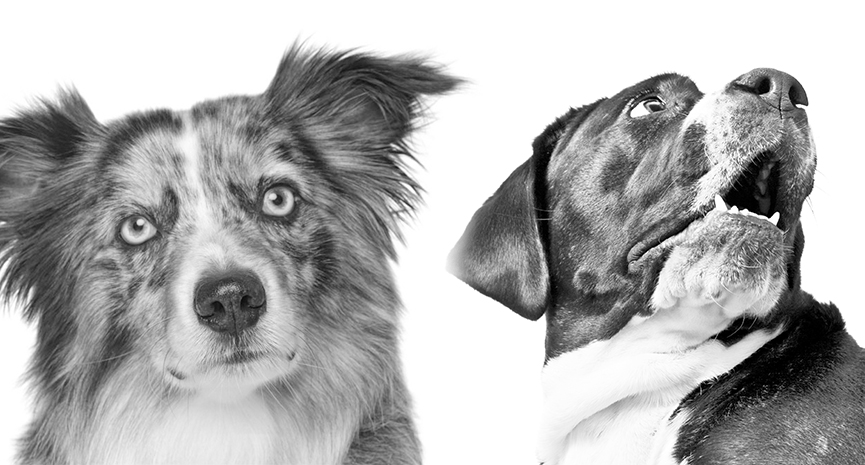It may be difficult to believe that the existence of real emotions in dogs was, and in some places still is, a point of scientific controversy. In the distant past it was presumed that dogs had very rich mental lives with feelings much like those of humans. However with the rise of science things began to change. We learned enough about the principles of physics and mechanics, so that we could build complex machines, and began to notice that living things (both people and animals) were also based upon by systems governed by mechanical rules and chemical processes. In the face of such discoveries, religions stepped in to suggest that there must be more to human beings than simply mechanical and chemical events. Church scholars insisted that people have souls, and the evidence they gave for this was the fact that humans have consciousness and feelings. Animals might have the same mechanical systems, but they did not have a divine spark, and therefore they do not have the ability to experience true feelings.
Since most research at the time was church sponsored it is not surprising that prominent scholars, such as the French philosopher and scientist Rene Descartes adopted this viewpoint. In a highly influential set of analyses, Descartes suggested that animals like dogs were simply some kind of machine. He would thus describe say a Beagle, as simply being a dog-shaped chassis, filled with the biological equivalent of gears and pulleys. Although this machine doesn’t have consciousness and emotions it can still be programmed to do certain things.
In recent times science has progressed a long way beyond Descartes and we now understand that dogs have all of the same brain structures that produce emotions in humans, the same hormones and undergo the same chemical changes that humans do during emotional states. Dogs even have the hormone oxytocin, which, in humans, is involved with feeling love and affection for others. However it is important to not go overboard and immediately assume that the emotional ranges of dogs and humans are the same.
Not all people have the full range of all possible emotions. In fact at some points in your life you did not have the full complement of emotions that you feel and express today. Research shows that infants have a more limited range of emotions, but over time the child’s emotions begin to differentiate and they experience different and more complex emotional states.
Regarding the emotional lives of dogs researchers have come to believe that the mind of a dog is roughly equivalent to a human who is two to two-and-a-half. This conclusion holds for most mental abilities–including emotions. Thus we can look to the human research to see what we might expect of our dogs. Like a young child, dogs will clearly have emotions, but many fewer kinds of emotions than we find in adults.
At birth a human infant only has an emotion that we might call excitement. This indicates how aroused he is, ranging from very calm up to a state of frenzy. Within the first weeks of life the excitement state comes to take on a positive or a negative flavor, so we can now detect the general emotions of contentment and distress. In the next couple of months disgust, fear, and anger, become detectable in the infant. Joy often does not appear until the infant is nearly six months of age and it is followed by the emergence of shyness or suspicion. True affection (the sort that it makes sense to use the label “love” for) does not fully emerge until nine or ten months of age.
The complex social emotions, those which have elements that must be learned, don’t appear until late. Shame and pride take more than three years to appear, while guilt appears around six months after these. A child must be nearly four years of age before it feels contempt.
This developmental sequence is the golden key to understanding the emotions of dogs. Dogs go through their developmental stages much more quickly than humans do, and have all of the emotional range that they will ever achieve by the time they are four to six months of age. However, we know that the assortment of emotions available to the dog will not exceed that which is available to a human who is two to two-and-a-half years old. This means that a dog will have all of the basic emotions: joy, fear, anger, disgust and even love. However based on current research it seems likely that your dog will not have those more complex emotions like guilt, pride and shame.
But how about when you come home and your dog starts slinking around and showing discomfort, and you then find that he has left a deposit on your kitchen floor. It is natural to conclude that the dog feeling guilty about its transgression. However this is not guilt, but simply the more basic emotion of fear. The dog has learned that when you appear and his droppings are visible, bad things happen to him. What you see is his fear of punishment–he will never feel guilt.
So what does this mean for those of us who live with, and interact with dogs? The good news is that you can feel free to dress your dog in that silly costume for a party. He will not feel shame, regardless how ridiculous he looks. He will also not feel pride at winning a prize at a dog show or an obedience competition. However your dog can still feel love for you, and contentment when you are around, and aren’t these the emotions we truly value?





